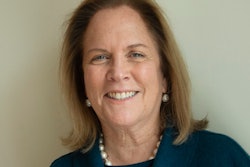In 2011, I was arrested for civil disobedience in front of the U.S. Senate, fighting for immigrant rights. While I was being arrested, children of undocumented parents visited senators with heart-shaped cookies asking them to take action on keeping families together. Sound familiar? We were using two key principles of community organizing to create culture and systemic change: pushing for policy change and changing people’s hearts.
Forward to 2017: I find myself working on diversity, equity and inclusion (DEI) in higher education. My background is in community organizing and organizational leadership. I’m in a field that is new to me and is still developing. There are no guidelines. But I know how to create culture and systemic change through policy and healing. This is how I embarked on my new journey as a unit-based chief diversity officer.
Unit-based Chief Diversity Officers (UBCDO) are the newest addition to the growing field of Diversity, Equity and Inclusion in higher education. Katrina Wade-Goldman and Damon Williams define the role of the CDO in higher education (the latest iteration of a long history of staff and administrators working towards advancing DEI, before it was called DEI) as an administrator, reporting to the president or provost who is responsible for the institution’s “inclusion and excellence for all.” The role of the UBCDO is the same as the CDO, except that it is within academic and non-academic units.
Or is it something else?
According to a study on the Experiences of Academic Diversity Officers (ADO) by the National Center for Institutional Diversity, UBCDOs play different roles depending on the unit they are in. They can be in charge of strategic planning and make decisions about DEI efforts that affect the entire unit or be implementers only. Some of them are dedicated full-time DEI staff, others are part-time staff, faculty, or administrators. In large units, they can be a team of multiple full-time people.
As middle managers, autonomy and leadership is unclear.
Units are not clear on how to implement DEI efforts and what they should be asking from CDOs. Some give more autonomy and leadership than others. From day one, I took leadership of our unit’s DEI strategic plan. Students, faculty and staff needed to know what our DEI strategy is in order to implement it. So given that I am a community organizer, I organized community meetings and visual campaigns to teach and engage people. I incorporated changes from feedback received in the process of implementation to make the DEI plan a “living” document. This was possible because I was given freedom and autonomy to do my work.















